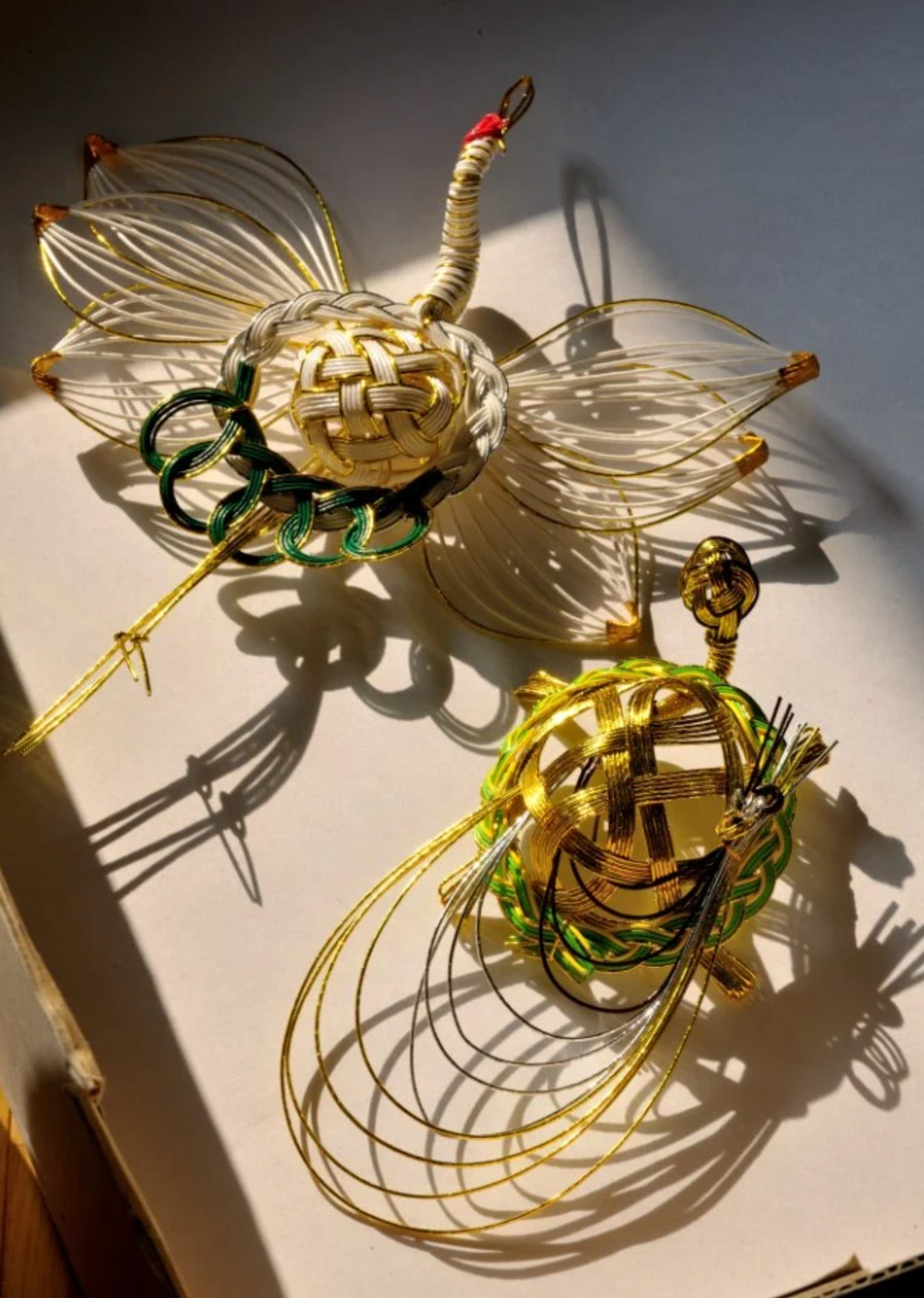The Art of Mizuhiki
This ancient Japanese craft displays both beauty and an amazing depth of meaning
(Photo: Kazuko Nishimura)
A few years ago, my former home ec teacher (from middle school!) Jean Maeda showed me some intricate bows and rosettes on packages that her mother made. I was instantly smitten with mizuhiki, or the art of shaping cords made of twisted washi paper into delicate designs.
Simple correspondence is never plain in Japan, with decorations of washi paper and mizuhiki. (Photo: Kawamoto Seiya)
Like most Japanese arts, mizuhiki has deep and sacred meanings associated with its ties (or knots). Many convey wishes of good fortune, happiness, long wedded bliss or congratulations. Some knots are easy to undo, conveying a recurring happiness, while others are meant to be unbroken for a once-in-a-lifetime journey.
But it doesn’t stop there. The number of strands used, whether they are an odd or an even number and what colors are used all give meaning to the design. For example, using five strands together in a design symbolizes the hand with its five fingers. According to mizuhiki artist Morita Eriko, these five strands reach out as hands, joining other hands.
The Iida area of southern Nagano in Japan produces 70% of the world’s mizuhiki cords. The region encourages people to come and try their hand at both paper-making and mizuhiki. (Photo: go-nagano.net)
Odd numbers of cords are for happy occasions and for things you want to happen over and over again (good fortune, achievement, etc.) Even numbers are for solemn or somber moments, such as a memorial or funeral—something that happens only once. They are also appropriate for a wedding, since it is best if that only happens once, too.
Methods and mastering mizuhiki
Although mizuhiki is associated with Japan and has been for nearly 2,000 years, it can be traced back to China before that. The Chinese brought it to Japan around the same time as buddhism. The strong cord known as motoyui was used to tie the elaborate topknots of Japanese aristocracy; it was perfect for the new art form of embellishing ceremonial gifts.
Morita Eriko became a mizuhiki artist in 2006 and founded her studio Wakobo Hoyu in Kyoto. Many of her designs are whimsical depictions of figures, foods and flowers; she creates them purely from her own vision. (Photo: Kawamoto Seiya)
Mizuhiki uses no glue, staples or tape to mar its lines. The stiff bendable paper cords stay in place through the confining weaves and knots that you make. It reminds me of how I used to turn stiff palm fronds given out on Palm Sunday into crosses for my kids to keep until the next year. They were very primitive but relied on the same folding and weaving as mizuhiki (and you could do it very quietly during Mass).
The videos for mizuhiki make it look easy but Maeda says it takes time and patience to master. “I tried to self-teach but it is a complicated art,” she admits.
Whether you get the urge to try this extraordinary art for yourself, or simply want to incorporate the designs into your world, mizuhiki is a fascinating design element that promises goodwill and transcends time.






Just fascinating, Erika! Can't believe I never knew about mizuhiki since I both love all things paper and have spent time in Japan. Those Japanese -- such a sense of design! Thank you for introducing me to such a beautiful art...